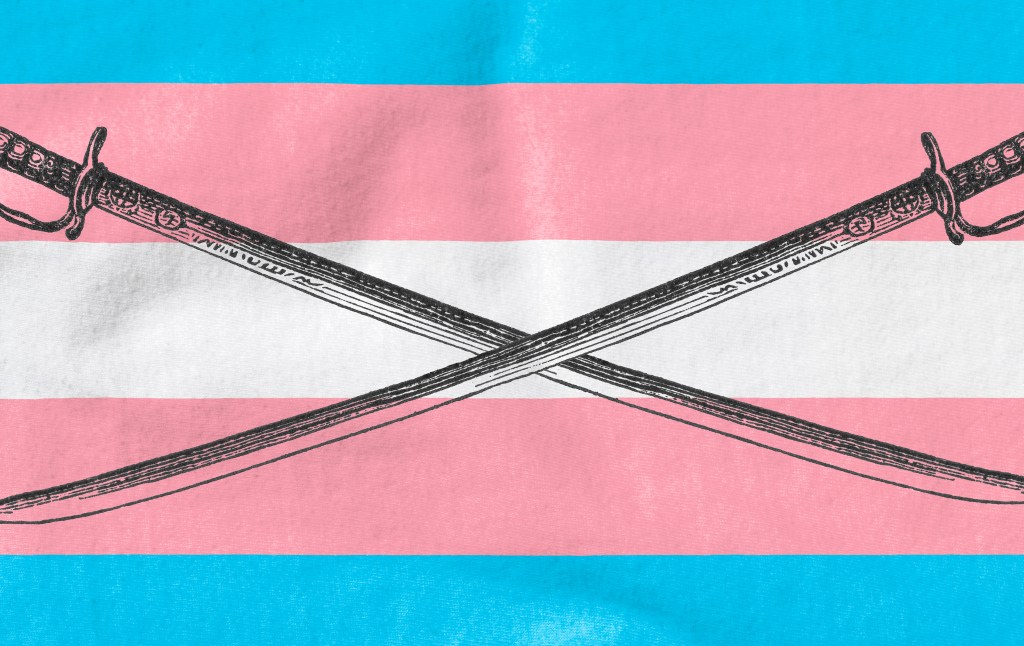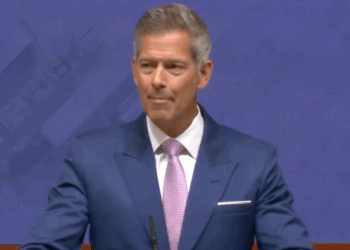
For years, there has been a growing chorus arguing that, in an era where Americans are increasingly devoid of faith and transcendent meaning, our sublimated religious impulses have found a new home in our political sphere, turning every policy debate into a zero-sum game with existential stakes. Add to this our social media echo chambers and the algorithms that highlight outlier positions on the left and right, and it’s no wonder that we assume the worst about our political rivals.
Nevertheless, few issue areas in our political discourse are as tense as the discourse surrounding transgender issues, particularly the medical transition of minors. Indeed, the discourse is likely to be reignited, with NPR recently reporting that the U.S. Department of Health and Human Services plans to issue two proposed rules later this month which would prohibit Medicaid and CHIP reimbursements for pediatric medical interventions for dysphoric minors, and Medicaid and Medicare funding for any hospital that renders these practices.
Ironically, both the “affirming” and what I’ll call the “restrictionist” camps are united by compassion for what they perceive as highly vulnerable and exploited groups, yet they diverge radically in how they define those groups and their needs. In the spirit of lowering the political temperature, I think it is useful to map out some of the basic assumptions underlying the affirming and restrictionist perspectives. Although years of research—and my own value judgments—have led me to conclude that the available evidence supports the restrictionist position, I view this exercise as a good-faith attempt to help readers, and each camp, better understand the nature of the debate.
Broadly speaking, the affirming camp believes that a class of children exist (“trans kids”) who by virtue of possessing a “gender identity” different than their biological sex, require social, psychological, and medical “affirmation” to reduce the experience of “gender dysphoria” and to prevent suicide. A key axiom here is that as early as age 4, “trans kids” already “know who they are,” which the affirming camp believes makes later medical regret unlikely. Indeed, activists often claim that fewer than 1 percent come to regret medical transition. One widely reported study found that 94 percent of trans-identified youth who first socially transitioned as children persisted in their identity after five years.
While conceding that “gender identities” may sometimes be “dynamic,” the affirming camp generally denies that they can be socially influenced. From their vantage point, “affirming” a child’s cross-sex identity socially and medically is in the best interest of a child’s mental and emotional health. Moreover, this belief is validated by the mainstream medical establishment—including the American Medical Association, the American Academy of Pediatrics, and the Endocrine Society—which maintains that “affirming care” is standard medical practice and “evidence-based.”
As a consequence of these beliefs, the affirming camp tends to interpret opposition to “affirming care” for minors as essentially an attempt to deliberately harm an already persecuted minority group, motivated primarily by outright animus and intolerance for persons who don’t conform to sex stereotypes. Although it has been debunked, the “transition-or-suicide” myth continues to haunt the affirming camp, creating a sense of urgency to make medical transition readily available.
There is a strain of affirming thought, however, which focuses on patient autonomy as the guiding principle guiding medical decision-making. Thought leaders like Andrea Long Chu and Florence Ashley explicitly argue that minors should be allowed to pursue “affirming care” based on nothing more than the principle of bodily autonomy, regardless of other bioethical considerations. A similar argument was recently advanced by one of the Dutch founders of pediatric gender medicine, Annelou L.C. de Vries, who argued alongside her co-authors in 2024 that “affirming care” for minors should not need to demonstrate “effective outcomes” to still be considered “legitimate and essential care.”
In contrast, the restrictionist camp is often skeptical of the intellectual foundations of “affirming care,” from the science in support of medical transition to the concept of “gender identity” itself.
On the scientific front, the restrictionist camp perceives one of the greatest medical scandals in U.S. history—made possible by institutional failure and capture—perversely masquerading as a human rights crusade. Many in this camp point out that the initial positive findings supporting the Dutch protocol, which pioneered pediatric medical transition, are compromised by severe methodological flaws and have not been successfully replicated.
Despite assertions by the U.S. medical establishment that “affirming care” is “evidence-based” and lifesaving, these claims are demonstrably false by the standards of what’s known as “evidence-based medicine,” which evaluates the quality and reliability of research findings. The stark reality is that every systematic review looking at the effectiveness of pediatric gender medicine—the highest standard of medical evidence—has found only “low certainty” evidence for benefits. Moreover, evidence suggests that “affirming care” does not resolve preexisting psychiatric issues and that these issues, not gender dysphoria, are what drives (thankfully rare) acts of suicide in this population.
Although evidence of harm also remains uncertain in systematic reviews, we know enough about human physiology to anticipate the harms associated with these interventions. For example, while we may not have much longitudinal data on the impact of testosterone therapy on female physiology for the purpose of transitioning, we know that elevated testosterone levels pose cardiovascular and metabolic risks. Elevated testosterone levels can also lead to abnormal changes to the female reproductive system, including potential infertility. As a result of this unfavorable risk-benefit profile, health care bodies in countries like the U.K., Sweden, and Finland—not exactly bastions of LGBTQ hate—have prioritized psychotherapy and mental health care as the first line of treatment, while reserving more invasive treatments for clinical trials.
In the New York Times Magazine, a former Biden aide conceded that the administration ultimately realized when it was already too late that “its allies in the L.G.B.T.Q. movement had overstated the medical case for pediatric gender-affirming care.” By this point, however, the administration had already made the radical move to redefine sex to include “gender identity” throughout the federal government and pushed “affirming care” for minors through executive orders and a federal rule that modified Section 1557 of the Affordable Care Act to include protections for “gender identity.” The rule was unambiguous that refusing to provide “affirming care” was discriminatory, full stop.
To critics of the affirming approach, the blanket “be kind” approach to affirmation turns compassion on its head by destabilizing the burgeoning identities of youth in developmental flux, many of whom grow up to be same-sex attracted. Historically, roughly 85 percent of youth with childhood-onset dysphoria no longer experience that dysphoria by the resolution of puberty. For this reason, the restrictionist camp often views social transition itself—adopting a new name, pronouns, and perhaps dressing differently—as a psychological intervention that interferes with identity development and increases the odds that a child will pursue a medicalization pathway. In addition, a recent analysis from Germany found that nearly 60 percent of patients with dysphoria diagnoses between the ages of 5-24 no longer possessed a diagnosis five years later, with adolescent females aged 15-19 having the highest desistance rate of 72.7 percent.
Critics also observe that “gender identity” theory medicalizes normal gender non-conformity. There is no test for gender dysphoria, and some clinicians maintain that anyone with an identity consistently divergent from their sex should be eligible for medical treatment, regardless of whether they experience distress. But if “gender incongruence” is just a normal way of being in the world, and doctors are not treating an underlying disorder, it’s unclear how “affirming care” can also be “medically necessary.”
Moreover, the category “transgender” is nebulous and defines itself in relation to sex stereotypes. To illustrate, the American Psychological Association defines “transgender” as anyone “whose gender identity, gender expression or behavior does not conform to that typically associated with the sex to which they were assigned at birth.” Ironically, “gender identity” theory reimposes rigid gender norms by implying that masculine women are men and feminine men are women, reducing the ability of both sexes to express the full range of human emotions and preferences. To see the trickle-down effect of this strain of thought, look no further than one study of detransitioners, which found that nearly two-thirds of female detransitioners cited a “change in their personal definition of male and female” as one of their reasons for reidentifying with their sex.
Recent changes in the typical profile of individuals identifying as transgender also undermine the argument that the identification is immune from social influence. The psychologist Jean Twenge used CDC data to estimate that trans-identification increased 422 percent among 18 to 24-year-olds between 2014 and 2023. During that same period, the number of Americans aged 25 to 34 identifying as transgender also quintupled—and there has been no corresponding increase among adults 35 and older. What’s more, over the last 10 years a new patient cohort has emerged that is primarily comprised of adolescent females with preexisting psychiatric issues, a population that would not meet eligibility criteria under the Dutch protocol, which excluded minor patients with adolescent onset dysphoria and severe psychiatric issues.
The beliefs held by the two camps are difficult to reconcile, but explain the fervor on both sides of the debate. Despite uncharitable claims from the “affirming camp” that those in opposition to affirming care must be driven by hatred and animus, this framing sidesteps compelling scientific and bioethical reasons to prohibit access to experimental interventions. According to a Pew Research survey, 56 percent of Americans support legal prohibitions on pediatric transition procedures for minors. However, the same percentage also supports discrimination protections for the trans-identified in housing, employment, and public spaces, suggesting Americans are tolerant and accepting of the trans-identified as a whole.
Whereas the affirming camp conceptualizes access to pediatric medical transition as a human and civil rights crusade, the average American appears to remember that we’re talking about children. It’s hard to square a legal right for minors to access non-FDA-approved, irreversible medical interventions with laws that prohibit the same minors from drinking, smoking, and voting before they come of age.
One of the fundamental disconnects between the camps is that one side often believes in the reality of “trans kids” while the other side generally rejects it. To sex-realists, gender-nonconforming boys and girls are just that, boys and girls who don’t conform to sex stereotypes, not a distinct class of person who requires medical interventions to be their “true self.” While it would be incredibly naïve of me to claim that there is no opposition to “affirming care” motivated by genuine hostility and disdain toward gender non-conformity, my experience is that most people and organizations skeptical of pediatric medical transition care deeply about children, including gender-nonconforming ones, and are primarily skeptical for scientific and ethical reasons.
I believe members of the affirming and restrictionist camps are generally well-meaning and motivated by compassion for children. The politicization of what should be a medical and public health issue, though, taps into our tribal instincts and the narratives we already swim in. Where one side sees an embattled minority group conscripted into a political game, the other sees psychologically vulnerable boys and girls swept into an inchoate ideology—with the backing of the medical establishment—that leads to physical and emotional ruin. Still, after the success of Trump’s “they/them” ad in the lead-up to the 2024 presidential election, some within the Democratic Party have suggested moderating on transgender issues.
The recent success of Democrats like Zohran Mamdani in New York City—who promised to set aside $65 million for “affirming care”—has convinced some that the left should instead double down on transgender rights. Of course, New York is not representative of America. But the fact remains that the debate over pediatric medical transition is not going anywhere. The U.S. is functionally divided into “affirming” sanctuary states and states that prohibit physicians from treating dysphoric minors with medical interventions.
Moreover, like Biden before him, Trump is unlikely to have the final say on these interventions. We need to find ways to talk about “affirming care” without talking past each other. The only way to bridge our epistemic divides is to dive headfirst into hard conversations with humility and grace, holding onto the hope that the most American way to change minds is through dialogue—not coercion.

















